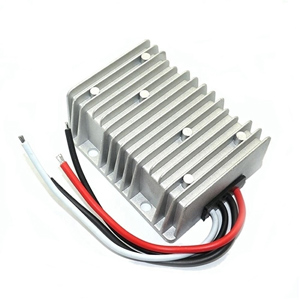Protection Functions of DC-DC Converters
In modern electronic and electrical systems, DC-DC converters play a vital role. They efficiently and stably convert one level of DC voltage into another, providing reliable power to a wide range of devices. As applications expand, DC-DC converters must not only deliver high efficiency and low losses but also include comprehensive power protection functions to ensure safe and stable operation in complex environments.
Among these protection mechanisms, overload protection, overcurrent protection, and overtemperature protection are the most common and important. They work together to provide multiple layers of safety for both the converter itself and the connected loads.

Why Power Protection Is Necessary?
DC-DC converters often operate under high loads, extended duty cycles, and even harsh environments. External voltage fluctuations, sudden load startups, circuit aging, and changes in ambient temperature can all stress the converter. Without effective DC-DC converter protection, performance and lifespan may be compromised, and in severe cases, power supplies can fail or even cause fires and system shutdowns. Therefore, protection functions are not just about the reliability of the converter itself but are also critical to the safety and stability of the entire power system.
Overload Protection
Definition and Principle: Overload protection activates when the load power exceeds the converter's rated capacity. The converter automatically takes measures—such as limiting power output or shutting down—to prevent internal components from being damaged by prolonged overloading.
Function and Importance: Overload protection prevents overheating or failure when the converter is pushed beyond its design capacity and avoids secondary damage to connected loads. It acts as a crucial safety buffer and ensures reliable operation of DC-DC power modules.
Overcurrent Protection
Definition and Principle: Overcurrent protection triggers when the output current exceeds the rated value. The converter responds by limiting current, tripping the circuit, or enabling short-circuit protection. Compared with overload protection, it focuses specifically on current management.
Function and Importance: The main role of overcurrent protection is to prevent excessive currents from burning circuits or damaging conductors. In the event of a short circuit or equipment fault, it instantly interrupts the fault path and prevents major accidents. This function is especially important in DC-DC buck converters, battery-powered systems, and industrial power applications.
Overtemperature Protection
Definition and Principle: Overtemperature protection monitors the converter's internal temperature in real time. When the temperature exceeds a set threshold, the system reduces power or shuts down to prevent components from being damaged by overheating.
Function and Importance: Temperature is a critical factor for reliability and lifespan. Prolonged high heat accelerates component aging, degrades performance, and can cause failure. The overtemperature protection function ensures that converters remain safe and reliable even under hot environments or continuous heavy loads, supporting long-term power stability.
Combined Protection
Although these protections are triggered under different conditions, they usually work together:
- Overload protection addresses excess power.
- Overcurrent protection limits sudden current surges.
- Overcurrent protection limits sudden current surges.
Overcurrent protection limits sudden current surges.
A DC-DC converter is not just a voltage regulator—it is also a key component for safety and system stability. Overload protection, overcurrent protection, and overtemperature protection together build a reliable defense line, ensuring safe operation under complex conditions. For users, it is crucial to check whether these protection features are well designed when choosing a converter. Only converters with comprehensive protection mechanisms can achieve true long-term reliable operation.


